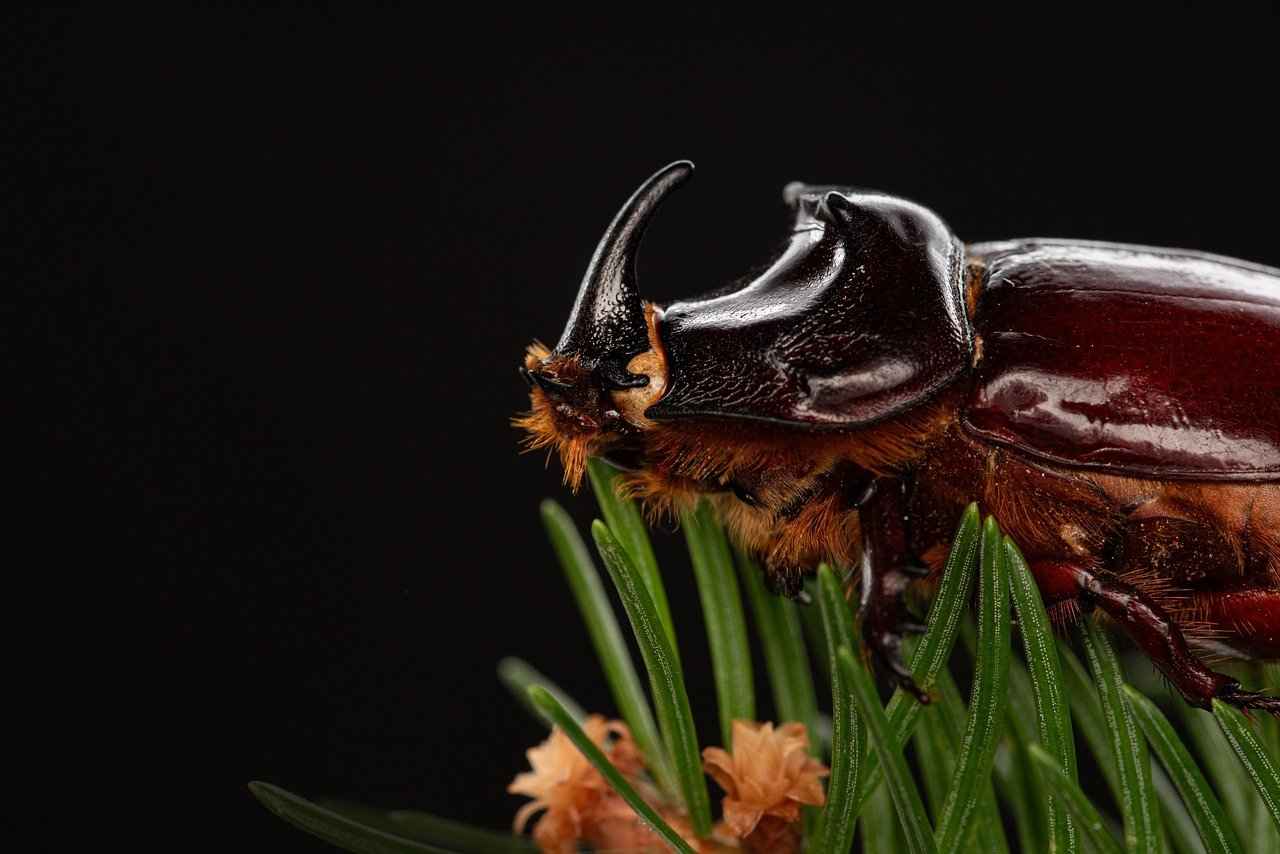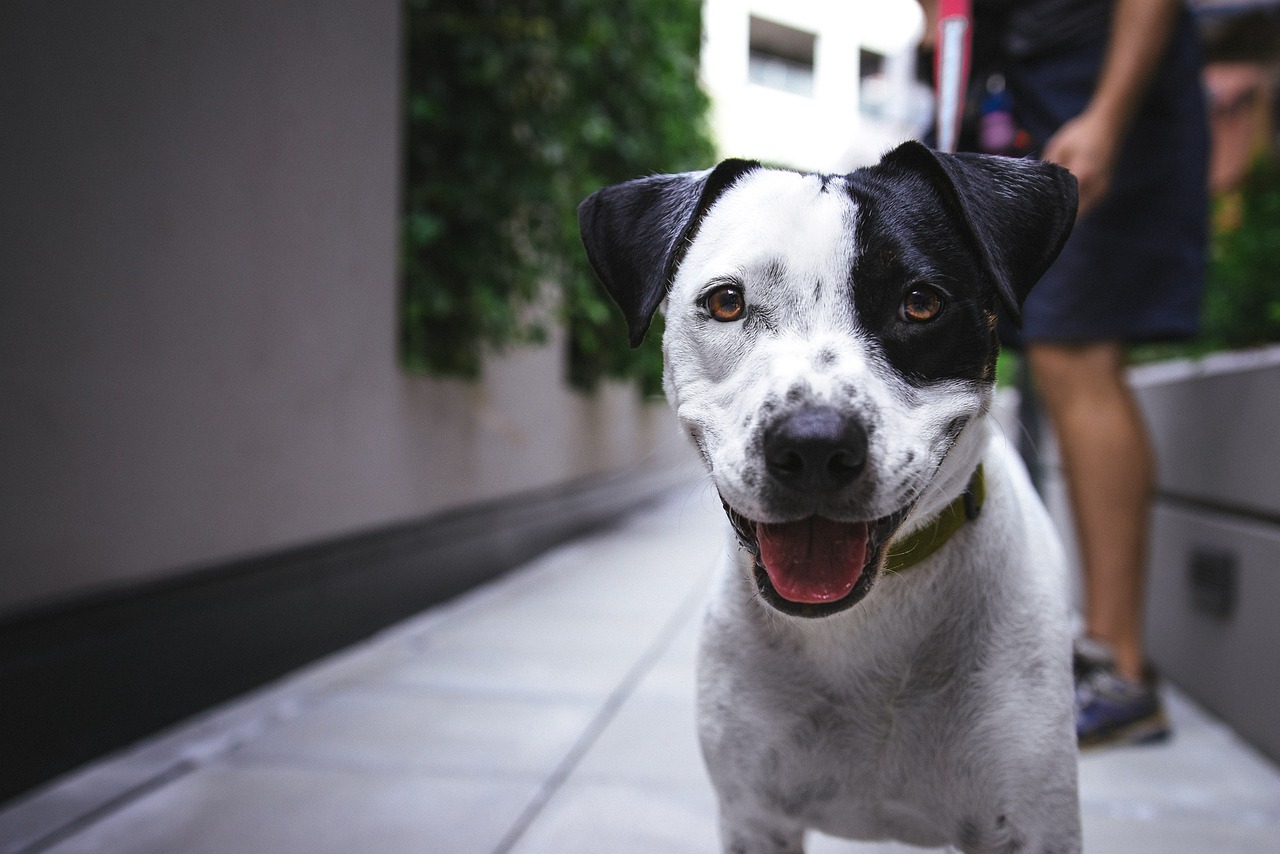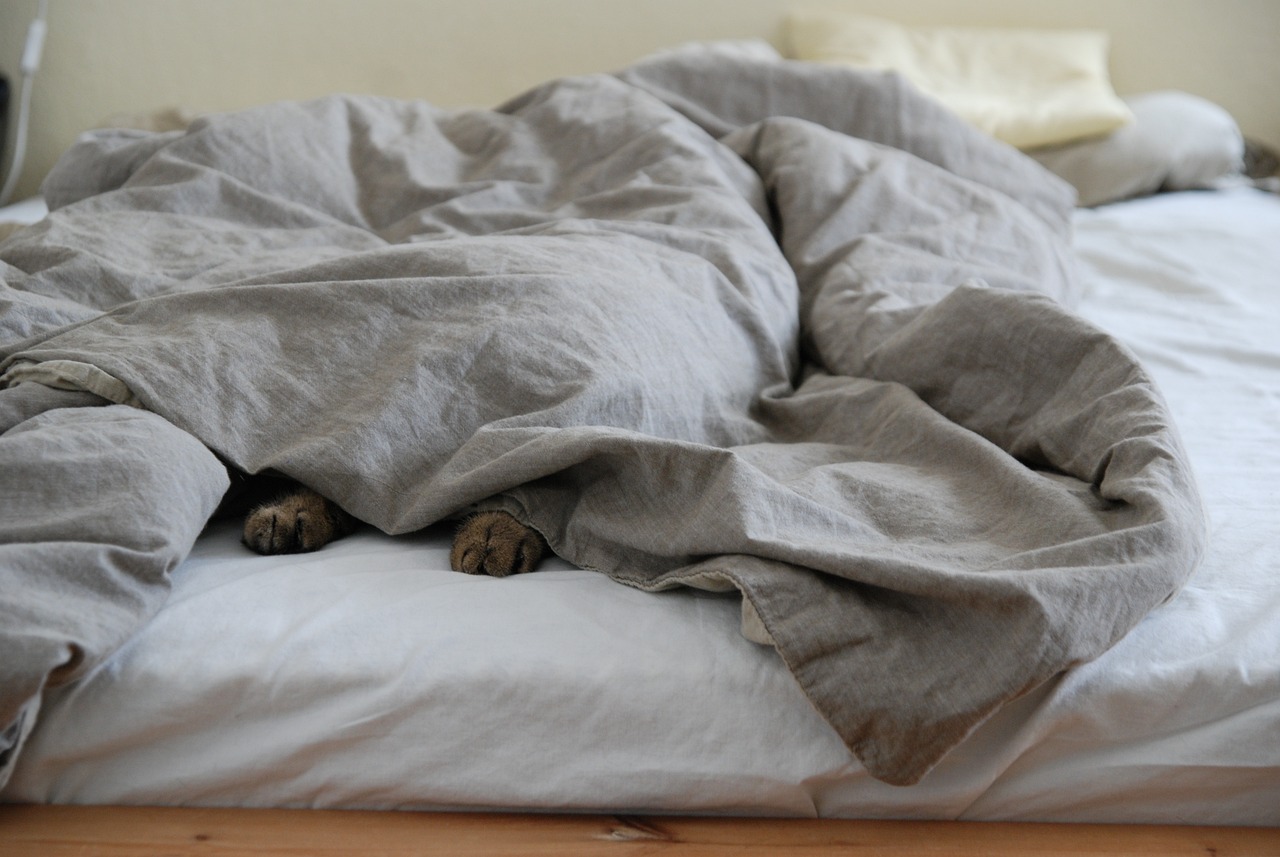This article delves into the intricate relationship between bed bugs and dogs, addressing prevalent concerns, identifying symptoms of bites, outlining prevention strategies, and discussing treatment options to ensure the health and safety of your beloved pets.
Understanding Bed Bugs
Bed bugs are small, parasitic insects that primarily feed on the blood of humans and animals. Their presence can lead to discomfort and health issues for both pets and their owners. Understanding their biology and behavior is essential for effective prevention and control.
Do Bed Bugs Bite Dogs?
Many pet owners are concerned about whether bed bugs can bite dogs. While dogs are not their primary targets, they can still be affected. Bed bugs are drawn to warmth and carbon dioxide, making dogs potential hosts. However, the risk is generally lower compared to humans.
Symptoms of Bed Bug Bites on Dogs
- Physical Signs: Look for red welts, itching, and irritation on your dog’s skin. These signs may be mistaken for other insect bites, so careful observation is crucial.
- Behavioral Changes: Increased scratching, restlessness, or changes in sleep patterns may indicate discomfort caused by bed bug bites.
How to Confirm a Bed Bug Infestation
To confirm a bed bug infestation, inspect your home and pets thoroughly. Look for small, dark spots on bedding or furniture, which may indicate bed bug droppings. Regular checks can help catch infestations early.
Preventing Bed Bug Infestations
- Regular Cleaning: Maintain a clean environment by vacuuming frequently and washing bedding regularly.
- Protecting Your Dog’s Sleeping Area: Use bed bug-proof covers for your dog’s bedding and wash them regularly to minimize risk.
Treating Bed Bug Bites on Dogs
If your dog is bitten by bed bugs, prompt treatment is essential. Home remedies such as oatmeal baths or aloe vera can soothe itching. However, knowing when to seek veterinary care is crucial; if your dog shows signs of severe discomfort or infection, consult a veterinarian.
In conclusion, understanding the relationship between bed bugs and dogs is vital for pet owners. By being vigilant and taking preventive measures, you can protect your furry friends from these pesky intruders.

Understanding Bed Bugs
Bed bugs are small, parasitic insects that primarily feed on the blood of humans and animals, including our beloved pets. Understanding their biology, behavior, and the environments they thrive in is crucial for effective prevention and control. These insects, scientifically known as Cimex lectularius, are notorious for their ability to hide in tiny crevices, making them difficult to detect.
Bed bugs are typically nocturnal, which means they are most active at night when their hosts are asleep. They are attracted to warmth and carbon dioxide, which is why they tend to bite humans and animals during the night. Adult bed bugs are about the size of an apple seed, with a flattened, oval shape, and can vary in color from light brown to reddish-brown after a blood meal.
One of the most alarming aspects of bed bugs is their rapid reproduction. A single female can lay hundreds of eggs in her lifetime, making infestations grow quickly if not addressed. Furthermore, bed bugs can survive for several months without feeding, allowing them to endure periods of low host availability.
To effectively manage bed bug infestations, it is essential to recognize their signs. Common indicators include small, dark spots on bedding or furniture (which are fecal stains), shed skins, and a musty odor. Regular inspections of your living spaces, especially around sleeping areas, can help catch infestations early.
In summary, understanding the biology and behavior of bed bugs is vital for anyone concerned about their presence in homes or around pets. Awareness of their habits and signs can lead to more effective prevention strategies and quicker resolutions to infestations.

Do Bed Bugs Bite Dogs?
As a pet owner, you may have concerns about the presence of bed bugs in your home and their potential impact on your furry friend. While bed bugs are notorious for feeding on human blood, the question remains: can they bite dogs? This section will clarify the risks associated with bed bugs and how they interact with dogs compared to humans.
Understanding Bed Bug Behavior
Bed bugs, scientifically known as Cimex lectularius, are small, wingless insects that thrive in warm environments. Their primary food source is blood, and they are primarily attracted to carbon dioxide and body heat. While they are more commonly found on human hosts, they can also bite dogs if the opportunity arises. However, the likelihood of bed bugs choosing dogs over humans is relatively low.
Do Dogs Attract Bed Bugs?
Dogs can indirectly attract bed bugs if they frequently come into contact with infested areas, such as hotels or homes with existing infestations. Additionally, dogs with thick fur may provide a suitable hiding spot for these pests, making it essential to monitor your pet’s environment.
Symptoms of Bed Bug Bites on Dogs
- Itching and Irritation: Dogs may scratch excessively or show signs of discomfort.
- Red Welts: Similar to humans, dogs may develop small, red welts at the site of the bite.
- Behavioral Changes: Increased restlessness or anxiety can also indicate discomfort from bites.
Conclusion
While bed bugs can bite dogs, the risk is relatively low compared to humans. Maintaining a clean environment and being vigilant about potential infestations can help protect your pets. If you suspect your dog has been bitten, observing for symptoms and consulting a veterinarian for appropriate treatment is advisable.
Symptoms of Bed Bug Bites on Dogs
Identifying the symptoms of bed bug bites on dogs can be quite challenging for pet owners. Unlike other insect bites, bed bug bites may not always be immediately apparent, making it crucial to recognize the signs early. This section delves into the common symptoms associated with bed bug bites on dogs and highlights how these symptoms can differ from those caused by other insects.
- Red Welts and Bumps: One of the most noticeable signs of bed bug bites is the appearance of small, red welts or bumps on your dog’s skin. These may resemble mosquito bites but can vary in size and intensity.
- Itching and Irritation: Dogs may experience significant itching and irritation due to bed bug bites. If your pet is scratching more than usual or showing signs of discomfort, it could be a reaction to these pests.
- Localized Hair Loss: In some cases, excessive scratching can lead to localized hair loss around the bite area, further indicating a potential bed bug issue.
- Behavioral Changes: Pay attention to any behavioral changes in your dog. Increased restlessness, anxiety, or changes in sleeping patterns can be signs that your pet is dealing with discomfort from bed bug bites.
It’s important to note that bed bug bites may not always produce immediate symptoms. In some instances, reactions can take several days to appear, which can complicate the identification process. Additionally, the symptoms of bed bug bites can be similar to those caused by other insects, such as fleas or mosquitoes. Therefore, it is essential to consider the context and environment in which your dog spends time.
In conclusion, recognizing the signs of bed bug bites on dogs requires vigilance and attention to detail. By understanding the common symptoms and their implications, pet owners can take proactive steps to ensure their furry friends remain healthy and comfortable.
Physical Signs to Look For
When it comes to bed bug bites on dogs, identifying the physical signs is crucial for early intervention. The bites can manifest in various ways, and recognizing these symptoms can make a significant difference in your pet’s well-being. Here are some key signs to watch for:
- Red Welts: One of the most noticeable signs of bed bug bites is the appearance of red welts on your dog’s skin. These welts can vary in size and may be clustered together, resembling a rash.
- Itching and Irritation: Dogs may experience severe itching and irritation due to bed bug bites. This can lead to excessive scratching, which may exacerbate the problem and potentially cause skin infections.
- Swelling: In some cases, the area around the bite may become swollen. This swelling can indicate an allergic reaction to the bite, requiring immediate attention.
- Hair Loss: Continuous scratching or biting at the affected area can lead to hair loss. This is an important sign that your dog is experiencing discomfort and may need treatment.
- Behavioral Changes: Aside from physical signs, you may also notice changes in your dog’s behavior. Increased restlessness, anxiety, or reluctance to play can indicate that your dog is in distress.
Recognizing these symptoms early can help in seeking prompt treatment. If you suspect that your dog has been bitten by bed bugs, it is essential to consult with a veterinarian for appropriate care. Timely intervention can alleviate discomfort and prevent further complications.
Behavioral Changes in Dogs
When it comes to bed bug infestations, dogs can exhibit a range of behavioral changes that may signal discomfort or distress. These changes can be subtle but are crucial for pet owners to recognize. Understanding these behaviors not only aids in identifying potential bed bug problems but also ensures that your furry friend receives the care they need promptly.
- Increased Scratching: One of the most noticeable behavioral changes is an increase in scratching. If your dog seems to be scratching more than usual, it could be a sign that they are experiencing irritation from bed bug bites.
- Restlessness: Dogs may become restless or agitated, unable to settle down in their usual sleeping spots. This restlessness can be attributed to the discomfort caused by bites or the presence of bed bugs in their environment.
- Changes in Sleeping Patterns: If your dog suddenly starts avoiding their bed or sleeping in unusual places, this could indicate a problem. Bed bugs are nocturnal, and their bites may lead to your dog associating their sleeping area with discomfort.
- Aggression or Anxiety: Behavioral shifts such as increased anxiety or aggression can also occur. This may stem from the stress of dealing with bites or the irritation caused by the bugs, leading to a change in temperament.
Recognizing these behavioral changes is important for early detection of a bed bug infestation. If you notice any of these signs, it is advisable to conduct a thorough inspection of your home and consult with a veterinarian. They can help determine if the behaviors are indeed related to bed bugs or if other underlying issues may be at play.
In conclusion, being attentive to your dog’s behaviors can provide valuable insights into their health and well-being. By understanding the connection between behavioral changes and bed bug infestations, you can take proactive steps to protect your pet from these unwanted pests.
How to Confirm a Bed Bug Infestation
Confirming a bed bug infestation is a crucial step in addressing the issue effectively. These pests can be elusive, making it essential to employ a variety of methods to ensure their presence. Here are some effective techniques for detecting bed bugs in your home and on your pets:
- Visual Inspection: Start by conducting a thorough visual inspection of your home, focusing on common hiding spots such as mattresses, bed frames, and furniture seams. Look for small reddish-brown bugs, shed exoskeletons, and dark spots of fecal matter.
- Check Your Pets: Bed bugs can also infest your pets. Examine your dog’s fur and skin closely, especially around the ears, neck, and belly. Look for signs such as red welts or irritation that may indicate bites.
- Use Bed Bug Interceptors: Place bed bug interceptors under the legs of your bed and furniture. These devices can trap bed bugs as they attempt to climb up, providing clear evidence of an infestation.
- Heat Treatment: Bed bugs are sensitive to heat. Use a steamer on areas where you suspect infestation, as the high temperature can kill both bugs and eggs on contact.
- Professional Inspection: If you suspect a severe infestation, consider hiring a pest control professional. They have the expertise and tools to conduct a comprehensive inspection and confirm the presence of bed bugs.
Once you confirm an infestation, it is important to act quickly to prevent further spread. Early detection and intervention can save you time, money, and stress in dealing with these persistent pests.

Preventing Bed Bug Infestations
is essential in ensuring the health and comfort of both your family and pets. Bed bugs are notorious for their ability to hide and reproduce quickly, making it vital to implement effective prevention strategies. This section offers practical tips to help you keep your home and furry friends safe from these persistent pests.
- Regular Cleaning: Establish a routine that includes frequent vacuuming of carpets, rugs, and upholstery. Pay special attention to areas where pets sleep and play. Regularly washing pet bedding in hot water can also help eliminate any potential bed bugs.
- Inspect Second-Hand Items: When bringing home used furniture or clothing, inspect these items thoroughly for any signs of bed bugs. Look for small brown spots, shed skins, or live bugs before introducing them into your home.
- Seal Cracks and Crevices: Bed bugs can easily hide in small spaces. Seal cracks in walls, around baseboards, and in furniture to minimize hiding spots. This makes it harder for bed bugs to take up residence in your home.
- Use Protective Covers: Consider encasing your mattresses and box springs in bed bug-proof covers. These protective barriers can prevent bed bugs from entering or escaping, reducing the chances of an infestation.
- Limit Clutter: Reducing clutter in your home can help eliminate potential hiding places for bed bugs. Keep items stored in plastic bins with tight-fitting lids, especially in areas where your pets frequent.
- Educate Yourself and Others: Understanding how bed bugs behave and spread is crucial. Share this knowledge with family members and friends to help them recognize signs of infestations and take preventive measures.
By implementing these practical tips, you can significantly reduce the risk of bed bug infestations in your home. Remember, vigilance and proactive measures are your best defenses against these unwanted pests.
Regular Cleaning and Maintenance
Maintaining a clean environment is crucial in the fight against bed bugs. These pesky insects thrive in unkempt spaces, making regular cleaning an essential strategy for prevention. By adopting consistent cleaning routines, homeowners can significantly reduce the risk of infestations, ensuring a healthier living space for both humans and pets.
Bed bugs are known to hide in various places, including mattresses, bed frames, and even behind baseboards. Therefore, it is important to focus on these areas during cleaning sessions. Here are some effective strategies:
- Vacuum Regularly: Use a vacuum with a HEPA filter to capture bed bugs and their eggs from carpets, rugs, and upholstery. Pay special attention to seams and crevices.
- Wash Bedding Frequently: Wash all bedding, including dog blankets and toys, in hot water at least once a week. This helps eliminate any potential bed bugs and their eggs.
- Declutter Your Home: Reducing clutter provides fewer hiding spots for bed bugs. Regularly dispose of items you no longer need, especially in bedrooms and living areas.
- Inspect Second-Hand Items: Before bringing second-hand furniture or clothing into your home, inspect them thoroughly for signs of bed bugs.
- Seal Cracks and Crevices: Regularly check for and seal any cracks or crevices around walls, floors, and furniture to prevent bed bugs from entering.
Additionally, consider using bed bug-proof encasements for mattresses and pillows. These encasements can trap any existing bugs and prevent new ones from infesting your bedding.
In conclusion, a proactive approach to cleaning and maintenance can significantly decrease the likelihood of bed bug infestations. By implementing these practices, you not only protect your home but also create a safer environment for your pets.
Protecting Your Dog’s Sleeping Area
is a crucial step in preventing bed bug infestations. By taking proactive measures, you can create a safe and comfortable environment for your furry friend. Here are some essential tips on bedding choices and cleaning practices to help keep bed bugs at bay.
- Choose the Right Bedding: Opt for washable dog bedding made from materials that can withstand frequent cleaning. Avoid bedding with intricate designs or fabric types that are difficult to clean, as they can harbor pests.
- Regular Washing: Wash your dog’s bedding at least once a week in hot water. This will help eliminate any potential bed bugs and their eggs. Additionally, consider using a dryer on high heat, as the heat can kill any remaining pests.
- Use Protective Covers: Invest in bed bug-proof covers for your dog’s mattress and pillows. These covers create a barrier that prevents bed bugs from accessing the bedding, making it harder for them to establish a presence.
- Maintain a Clean Sleeping Area: Regularly vacuum the area where your dog sleeps, including carpets and surrounding furniture. Pay special attention to cracks and crevices where bed bugs might hide.
- Inspect for Signs of Infestation: Routinely check your dog’s sleeping area for any signs of bed bugs, such as tiny dark spots (fecal matter) or shed skins. Early detection is key to preventing a larger infestation.
- Limit Outdoor Exposure: If your dog has been in contact with areas known for bed bug infestations, such as hotels or parks, ensure they are thoroughly cleaned before returning home.
By implementing these practices, you can significantly reduce the risk of bed bugs affecting your dog’s sleeping area. A clean and well-maintained environment not only enhances your pet’s comfort but also contributes to their overall health and well-being.

Treating Bed Bug Bites on Dogs
If your dog has been bitten by bed bugs, it is essential to act quickly to alleviate discomfort and prevent further complications. Bed bug bites can cause significant irritation and distress for your pet, so understanding effective treatment options is crucial.
Immediate Steps to Take
- Inspect Your Dog: Begin by thoroughly examining your dog for any signs of bites or irritation. Look for small red welts or areas of inflammation on their skin.
- Clean the Affected Area: Gently wash the bite areas with mild soap and warm water to remove any irritants and reduce the risk of infection.
- Apply a Cold Compress: To alleviate swelling and discomfort, apply a cold compress to the affected areas for about 10-15 minutes.
Home Remedies for Relief
In addition to immediate care, there are several home remedies that can help soothe your dog’s discomfort:
- Aloe Vera: The natural soothing properties of aloe vera can help relieve itching and promote healing.
- Oatmeal Baths: Giving your dog an oatmeal bath can provide relief from itching and irritation.
- Calamine Lotion: Applying calamine lotion (if safe for dogs) can help reduce itching and inflammation.
When to Consult a Veterinarian
While many cases of bed bug bites can be managed at home, it is important to know when to seek professional help. Contact your veterinarian if you notice:
- Severe Allergic Reactions: Signs such as excessive swelling, difficulty breathing, or hives require immediate attention.
- Infection Signs: If the bite area becomes increasingly red, warm, or oozes pus, a veterinary visit is necessary.
- Persistent Symptoms: If your dog’s discomfort continues despite home treatment, professional evaluation is warranted.
In conclusion, addressing bed bug bites on dogs promptly is vital for their health and comfort. By implementing immediate care and utilizing home remedies, you can help alleviate your dog’s discomfort. However, always remain vigilant for signs that may require veterinary intervention to ensure your pet’s well-being.
Home Remedies for Bed Bug Bites
When your beloved dog suffers from the discomfort of bed bug bites, it can be distressing for both the pet and the owner. Fortunately, there are several home remedies that can help alleviate the itching and discomfort associated with these bites. This section explores various natural treatments that may offer relief.
- Cold Compress: Applying a cold compress to the affected area can help reduce swelling and numb the itching sensation. Wrap ice in a cloth and hold it against the bite for about 10-15 minutes.
- Aloe Vera: Known for its soothing properties, aloe vera gel can be applied directly to the bite. It not only provides relief from itching but also promotes healing.
- Oatmeal Bath: An oatmeal bath can be beneficial for dogs experiencing multiple bites. Simply grind plain oats into a fine powder and add it to your dog’s bathwater. This can help soothe irritated skin.
- Chamomile Tea: Brew chamomile tea, allow it to cool, and use a cotton ball to apply it to the bite. Chamomile has anti-inflammatory properties that can help reduce redness and swelling.
- Apple Cider Vinegar: Diluting apple cider vinegar with water and applying it to the bites can help alleviate itching. Its natural antiseptic properties may also prevent infection.
While these home remedies can provide temporary relief, it’s important to monitor your dog’s condition closely. If symptoms persist or worsen, consulting a veterinarian is advisable. Remember, the goal is to ensure your pet’s comfort while addressing the underlying issue of bed bug infestations in your home.
In conclusion, while bed bug bites can be bothersome for dogs, employing these natural remedies can significantly ease their discomfort. Always prioritize your pet’s health and well-being, and do not hesitate to seek professional help when necessary.
When to Seek Veterinary Care
Knowing when to seek veterinary care for your dog is essential, especially if you suspect that bed bug bites may be the cause of their discomfort. While bed bugs typically do not transmit diseases, their bites can lead to significant irritation and secondary infections if not addressed promptly. Here are some critical signs to watch for that indicate your furry friend may need professional medical attention:
- Severe Itching or Scratching: If your dog is scratching excessively, it may indicate an allergic reaction to the bites. Persistent scratching can lead to skin abrasions and infections.
- Redness and Swelling: Look for signs of inflammation around the bite sites. If the area becomes increasingly red, swollen, or warm to the touch, it could signal an infection.
- Behavioral Changes: Noticeable changes in behavior, such as increased restlessness, lethargy, or aggression, may point to discomfort that requires veterinary evaluation.
- Loss of Appetite: If your dog suddenly loses interest in food or shows signs of nausea, it may be due to pain or discomfort from the bites.
- Fever: A sudden increase in body temperature can indicate an infection. If you suspect your dog has a fever, consult your veterinarian immediately.
In addition to these signs, if you find any unusual lumps or bumps on your dog’s skin, it is crucial to seek veterinary care. Early intervention can prevent complications and ensure your dog receives the appropriate treatment.
Remember that while bed bug bites can be distressing, your veterinarian can provide guidance on managing symptoms and preventing future infestations. Always err on the side of caution when it comes to your pet’s health, and do not hesitate to reach out for professional help if you are concerned about their well-being.













